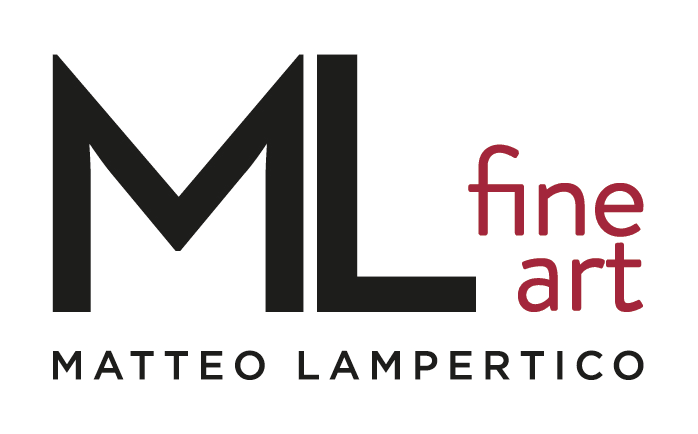M&L Fine Art presents the only exhibition to date in London by Antonio Calderara. He was one of the leading figures of Italian Post-War abstract art who was first discovered by artists including Almir Mavignier, Max Bill, Jesús-Raphael Soto, François Morellet and Reimer Jochims. Although he didn’t travel much he was an active member of the Minimalist movement, having conducted similar formal research to Agnes Martin and Josef Albers, whose paintings are included in his personal collection of around 270 works. He also supported young conceptual artists such as Lucio Fontana and Piero Manzoni. Calderara dedicated his life to the representation of space, the translation of light and the expression of silence. He created works on an intimate scale that were characterised by simple forms, the use of right angles, space without depth and flat blocks of colour. His rigorous compositions were based on measurement and he developed paintings that expressed bright, enveloping light and well organised spaces. Calderara was for many years a figurative painter who gradually and progressively abandoned figures for the landscape of lake Orta, never ceasing to simplify his vision.
Fourteen paintings, dating from 1960 to 1975, will be on display, representing the artist’s progression to geometric abstraction. Z+L (1960) is the earliest piece in the show, created a year after his first abstract painting, it illustrates Calderara’s move towards compositions that were made up of concentric squares, with his signature use of colour and contrasts clearly visible. In Attrazione Quadrata in Quadrata (1967-68), this has been fully realised and his concern for proportion and desire to translate light through colour can be compared to Josef Albers. His work remained unique because he expressed a changing atmosphere, a light that balanced everything out. Spazio Luce (1975) demonstrates an immutable and peaceful order where silence reigns.
During the 1930s Calderara created landscapes, urban scenes, figures depicted alone or in groups, and some rare still lifes. Giorgio Morandi’s simplicity, silence and meditation influenced him throughout his career but the Magic Realism of Giorgio di Chirico and Carlo Carrá can be detected in earlier works. Calderara’s universe closed in during the 1940s and 50s, the figures disappeared, forms faded away and monochrome took hold of the palette as light took precedence over the whole. In 1954, he discovered the work of Piet Mondrian whose rigorous minimalism struck him, as well as the Dutch painters Theo van Doesberg and Bart van der Leck. Their work didn’t encourage him to immediately abandon figure painting but instead allowed him to reflect upon the light of the material. He simplified the elements and architecture of the landscape by reducing the composition to a few horizontal and vertical lines that he arranged on the plane. To this he added his vocabulary of colours, pigments that translated the damp light of his homeland and the misty haze that blurred the shapes. He painted his first abstract painting in 1959 – a work that drew its inspiration from reality and observation but no longer really represented it. From this moment all of his artistic intentions are given to the compositions, to the relationship between the horizontal and the vertical, symmetry or asymmetry, progression or repetition.
Serge Lemoine describes Calderara’s career: ‘Through its origins, from its beginnings and by its development, [his] art has managed, whilst becoming more and more abstract, to remain universal and continue translating the world.’
Antonio Calderara was born in Abbiategrasso near Milan in 1903. He graduated in engineering from the Polytechnic Institute in Milan, and later became a painter. His first solo exhibition took place in 1923 and the following year he dedicated himself to painting full time. In 1944 he had a major solo exhibition at Salimbeni Art Gallery in Domodossola and also began a relationship with Galleria Del Grattacielo in Legano. In 1947 he had a solo show with Galleria della Spiga, curated by Somarè. In the spring of 1960, Calderara was included in ‘Konkrete Malerei’ and an exhibition titled ‘Konkrete Kunst. 50 Jahre Entwicklung’ organised by the artist Max Bill in Zurich to bring together the most important historic exponents of geometric abstract art. He generated critical acclaim from writers including Apollonio, Argan, Dorfles, Fagiolo, Kaisserlian, Murilo Mendes, L.V. Masini, Valsecci, Giulia Veronesi, Zavattini and Umberto Eco. In 1972, he was included in ‘Bochum’ at Galerie m alongside Enrico Castellani, Jan Schoonhoven, Ad Dekkers, Herman de Vries, Gerhard von Graevenitz, Günther Uecker and François Morellet. Significant solo shows were held at Anne Marie Verne Gallery, Zurich (1969, 71 and 73); Kozmopolotin Gallery, New York (1970); Denise René Gallery, Paris (1971); Kunstmuseum Düsseldorf (1973); Marlborough Gallery, Rome (1973); Fondacìon Jesus Soto, Ciudad Bolivar (1974); Galerie Gilles Gheerbrant, Montreal (1976); Kunstverein Fribourg (1976) and Stedelijk Museum, Amsterdam (1977).


